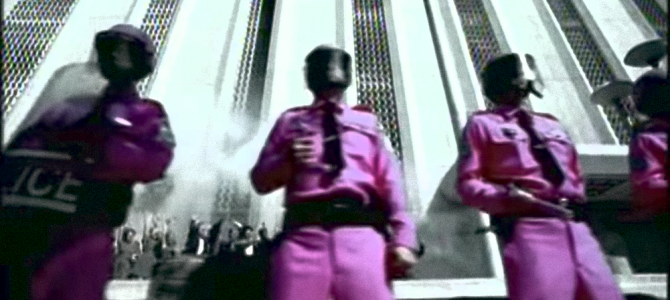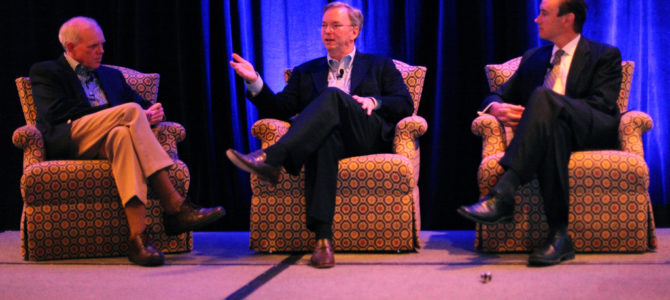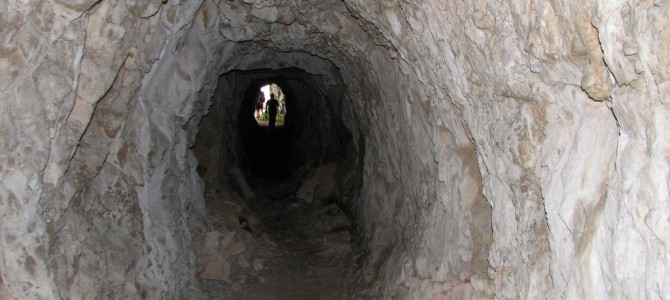
It is alleged—and not by libertarians—that the current American era is increasingly defined by a “libertarian moment.” Although some chatter did begin within the liberty movement, as libertarian lawyers found themselves gaining traction at last within the courts, the dominant sense is broader, more nervous, and even hostile. Libertarianism has long been negatively associated with personal recklessness and irresponsibility; now, thinkers Right and Left are shuffling toward a strange new consensus about the culture of irresponsibility that seems to characterize not just our fellow Americans, but our regime itself.
In a searching, pained essay at The New Republic, for instance, Mark Lilla warns that a libertarianism of radical self-entitlement now defines our age. “That is not because democracy is on the march,” he says, “(it is regressing in many places), or because the bounty of the free market has reached everyone (we have a new class of paupers), or because we are now all free to do as we wish (since wishes inevitably conflict).”
No, ours is a libertarian age by default: whatever ideas or beliefs or feelings muted the demand for individual autonomy in the past have atrophied. There were no public debates on this and no votes were taken. Since the cold war ended we have simply found ourselves in a world in which every advance of the principle of freedom in one sphere advances it in the others, whether we wish it to or not.
Lilla correctly intuits that something seemingly virtuous about democracy has led toward something vicious. He also senses that the relationship between the city and the soul, as Plato’s Socrates put it, might well be key to grasping how and why. (In the Republic, Socrates offers several different theories as to how a regime and the individuals within it mirror or pattern themselves upon one another.) Yet Lilla unaccountably downplays the massive contradiction at the center of our inexorable march toward autonomy. It is, of course, the state’s own march toward its own ever-greater—one might say tyrannical—autonomy. For decades, some theorists have fretted that history reveals humans endlessly hunger for more-autonomous conduct. Others have cheered the prospect! Either way, it is time to consider anew that political history reveals a related, inexorable hunger within the regime that rules us all.
The Latitude to Destroy Liberty
That creates obvious problems for libertarianism as a term to describe the age. We, like our government, take broader and broader latitudes. But almost as a rule, we do so at the expense of liberty—at the expense of the political freedom that has atrophied so dramatically under the past two administrations. Oscar Wilde once remarked that socialism would be wonderful, but it took up too much time on a Friday night. Today, millions upon millions of Americans live out a similar feeling toward civic republicanism (with no interest in being witty, or even self-conscious, about it).
That is why other new taxonomies grappling with libertarianism are also unable to apprehend the new reality that characterizes our life and world. At BuzzFeed, Ben Smith’s right-wing typology of “freedom Republicans” versus “liberty Republicans” acknowledges that today’s factional “jargon” of neocons, tea partiers, establishmentarians, and the like is a “mess.” It even apprehends that some Republicans care substantially more about political freedom than, shall we say, other kinds of freedoms. But it reflects the same spirit of the age that it seeks to pin down. The notion that personal freedom can make sense in the absence of political liberty is exactly the contestable claim at stake when we interrogate the present relationship in which our state and our souls or psyches work to define each other.
To conduct that interrogation requires a certain set of tools, including not only a rich theoretical apparatus but a depth and ripeness of personal experience attentive to the changes and transformations wrought since, say, the end of the twentieth century. Dick Cheney infamously remarked that at after 9/11, least some Americans, including some in government, must cross over in some deep sense to “the dark side.” Transposing that fearsome vision into a social and personal key, understanding what is happening to America requires acknowledging that at least some commentators and critics come at the question having been touched deeply by the reigning pathologies of our time.
A Coming of Age
Unfortunately, just about none of our “public intellectuals” know our present age inside out in this way—through experience, memory, and imitation. Not enough of our public critics of decadence have had a personal relationship with decadence. At the same time, those who have—those who would positively revel in what their opponents decry as moral corruption—almost universally lack the philosophical training, the intellectual curiosity, and the sense of civilizational duty that would orient them toward the urgent need for serious critique of soul and city alike.
That is one reason the current situation is so often presented as a “moment.” In fact what is happening is a coming of age, something one can only understand as an expression of the fullness of time. Historically, the cultural milestone of a coming of age fuses two kinds of deep comprehension into one. To come of age is to come into knowledge by heart on the one hand and carnal knowledge on the other. We are experiencing the maturation of a new regime in America—not simply an administration, movement, trend, or even a historical phase, but an order that repeats its patterns and structures in personal, social, cultural, and political life. In trying to unmask the identity of our new regime, those whose individual maturation has not mixed with the regime in time and space will continue to struggle in confusion.
Our best guides are those who know our regime with the intimate, gestating, but often silent knowledge that precedes mature self-reflection—but who also can recall, however distantly, their lived experience before the onset of the new regime. They will have lived through losing their innocence, illusions, and naïveté. They will have made secret errors and half-conscious choices that today, compounded, have at last begun to register in the pages of elite newsmagazines. For them, the drama of their confused, promising, misbegotten, and squandered young lives is not just experientially but conceptually inseparable from the drama of recent American history—specifically, in the ways that particular themes of sex and violence have come to dominate and define it.
For guides like these, libertarianism may hold out many things, but a master conceptual frame is not one of them. Indeed, rather than straining to pluck an abstract idea out of the clouds, they will instinctively turn to the signposts and symbols of the world to come that they encountered at propitious moments in their personal lives—figures, events, and creations that foreshadowed the rise of the new regime. Rather than seeking wisdom in unsupplemented reason, our best guides to the new American regime will begin where it began, at its origins.
Obliterating the Divide Between Public and Private
In September 1998, Marilyn Manson, who was then the most dangerous and threatening person in pop music, released his most high-profile album, entitled “Mechanical Animals.” The video for its lead single, a Grammy-nominated song called “The Dope Show,” teasingly featured an image of riot police, dressed head to toe in pink, drawing one another close in an amorous embrace. This striking vision, transgressive on several deeply human levels, drew on age-old sources of desire and disgust surrounding varieties of pleasure and power. Whatever the particulars of the intended message, the appearance of such a vignette on televisions across America hinted that something important was happening to the relationship between public power and private passion.
Today, indeed, we confront a transformation in the regulatory state so profound as to indicate a change at the regime level. Today, our regulatory state does not simply promulgate the kind of docile “soft despotism” Tocqueville feared, or blanket the human passions with the kind of bureaucratic uniformity Nietzsche derided as the “coldest of cold monsters.” Instead, as we still struggle to accept, it is aggressively intervening in the intimate details of everyday life as a friend to some kinds of civil liberties but an enemy of others.
Accepting this degree of change in our experience with the regulatory state requires reconsidering the durability of some of our most basic categories of sociopolitical thought. It is not just a question of political partisans running amok in an ideological or cultural war. The sharp divide between public and private life once defined our regime and our personal lives. Not only was limited government, of whatever size, thought to involve clear boundaries that marked those limits. Culturally, social and personal conduct was divided more or less neatly by what was done and not done in public. Among major institutions, religion uniquely straddled the public-private divide in a powerful way.
That era is over. Critical theorists have pushed to obliterate the foundational public-private divide since at least the late ‘90s. Their abstruse efforts have influenced legal reasoning. But our real-life experience has done the heavy lifting. From politics to mores and everywhere between, the public-private divide is losing its coherence, along with its hold on events, institutions, and individuals. Today, conservatives and some libertarians worry that religion is being forced into the worse end of a new sort of public-private divide. Because the whole conceptual framework of privacy and publicity is rotting away, the future of religion in America—along with the other constituent parts of our national character—depends on our understanding of what new framework has arisen to take its place.
It is always difficult to introduce serious new theoretical concepts into popular debate, and more so when aiming to diminish the relative importance of an ordeal like the one surrounding 9/11. That is why only in the wake of Edward Snowden’s shocking National Security Agency disclosures have commentators really started to puzzle through the possibility that we need to conceive of a new kind of regime to understand the government we live under. Exacerbating the problem, intellectuals are (even now) reluctant to allow the likes of Marilyn Mason to capture their imaginations, while virtuosos of pop culture have rare occasion to be inspired by abstruse-seeming conversations about political theory.
Artists Versus Intellectuals?
But both these complementary varieties of disinterest are at the heart of the puzzle concerning the contemporary regulatory state and the type of regime that orders it.
Today’s artists characteristically reflect Nietzsche’s diagnosis that tyranny in politics drives ambition into the creative arts—acting, imitation, and imagination. Today’s intellectuals frequently exhibit a kind of disciplined obtuseness about just how transgressive a culture routinely runs riot just outside the precincts of paternalist, maternalist, or nannyist regulation that defines officialdom in much of public and private life.
Our artists and our intellectuals, we could say, live in a certain kind of symbiotic, binary relationship. We could say this kind of relationship helps us catch sight of what kind of regime defines the scope and character of today’s regulatory state.
Let’s say we agreed to play a language game based on that supposition. The goal of the game is simple: to make a list of opposites that define the “artist sector” and the “intellectual sector.” Imagine, further, that instead of trying for the longest or most succinct list, we tried simply for an interesting, entertaining, and evocative one. Here’s one example of that kind of list.
| ARTIST SECTOR | INTELLECTUAL SECTOR |
| Impulsive | Rational |
| Unscripted | Scripted |
| Risk-loving | Risk-averse |
| Naked | Clothed |
| Sexy | Sexless |
| Squandering | Perpetuating |
| Organic | Geometric |
| Fecund | Sterile |
| Dirty | Clean |
| Contaminated | Antiseptic |
| Gross | Net |
| Disgusting | Odorless |
| “Hot mess” | “Cold Monster |
This is just a game; it isn’t a typology or an attempt at creating master categories. As a set, these antinomies give us a much richer, more accurate feel for the kind of divide that really shapes our sociopolitical experience in the current American regime. They give us important clues as to what is replacing our public-private divide, and what kind of regime is rising in its wake.
Regime Change Causes Sexual Liberation
These clues won’t just fall through the cracks of much contemporary “conservative” thought. They will be lost on “liberals,” as well. Just as cultural commentary on the Right suffers from a lack of real-life experience with the decadence it condemns, observers on the Left often exist in a kind of perversely innocent fantasy world wherein sexual autonomy leads axiomatically to political power.
One sad and laughable episode in this autoerotic adventure is Plays Well in Groups, Katherine Frank’s new book on polyamory. Her thesis includes the idea that group sex, in oppressive regimes like Iran, is the new point of access to experiences of liberation, rebellion, and revolution.
A glowing excerpt from the book, posted at Salon, conveys the gist: “Willingly taking risks with their social and sexual behavior, as these Iranian young people were doing, was viewed as a step toward social and political reform—not just a means of escape and excitement.” This assumes precisely what must be proven, and what experience around the world with governments that restrict political liberty actively disproves every day: that “cultural revolution” rooted in sexual “transgression” works as intended since the 1960’s—as the speartip, or vanguard, of politically transforming the regime.
De Sade knew better: right in the title, his “One More Step” recognized the transformation of all sexual relations as the consummation of revolutionary social reordering, not its catalyst. In other words, sexual liberation doesn’t bring about regime change—it results from regime change. Perpetual sexual revolution, of course, crowns the effort perpetual political revolutionaries undertake: not by achieving ideals, but rendering ideals—and “the ideal”—meaningless.
Restricting Liberty for ‘Health’ and ‘Safety’
Not that today’s type of regime, or its complementary personality type, desires anything that totalistic. The subhed of Salon’s excerpt of Plays Well in Groups describes the politics of the orgy as a “neo-conservative nightmare,” but the truth is far more ambiguous. Both neoconservatism and neoliberalism are quite compatible with today’s regulatory state and the new American regime. Both center around the activities of defining and providing health and safety. Furthermore, both focus on perfecting the realm of health and safety without regard to the public-private divide. And both prioritize that effort over the totalitarian goal of making the realm of health and safety universal.
Although their moral agendas may differ in the particulars, both “neos” are concerned to advance the same sorts of objectives for the same sorts of reasons (parsing the legitimacy of political liberty and the value of civil liberties accordingly). Although these motives and goals have been part of the intellectual conversation for decades—first appearing on the “conservative left” that constituted “first wave” neoconservatism—not until now has the American regime so deeply internalized and externalized its scope and methods.
What we have today then is something quite “neo,” historically speaking: a robust regulatory state that pursues health and safety at the expense of liberty in the context of a culture that demands robust interpersonal freedom. Rather than stamping out hedonistic pursuits and pleasure-centered living, 1984 style, the new statism creates a “safe” space for their “healthy” experience. Yet, rather than expanding the project limitlessly, Brave New World style, so as to make all pleasure official, the new statism tacitly acknowledges that our most potent appetites can never be fully domesticated, even with all the tools of force, surveillance, and coercion at the government’s disposal. The kind of motion that defines our age is not the crossing between public and private that once characterized our regime. Instead, it is now an oscillation between the realms of health-safety and sickness-danger.
In “The Dope Show,” Manson made overt the latently sexual and violent tension between those two realms. “Cops and queers make good-looking models,” he croaked. Postmodern theorists like Michel Foucault understood how the age-old affinity between decadence and authoritarianism could give rise to a sadist and masochistic underground at a time when the public-private divide still ruled the social order. Foucault’s all-too-respectable heirs are now caught in the grip of the same regime as the rest of us—unable to find repose either in the realm of health and safety or the realm of sickness and danger.
Establishing the framework that allows us to understand these tense relationships can yield some key causal mechanisms—the outlines of a logic that shows us what to expect from our new regime in action. Once this conceptual view is sketched out, it can be augmented with a historical, and finally an anthropological, view. Taken together, these three views unveil a developing anatomy of our regime, which by now only needs a suitable name: the pink police state.









